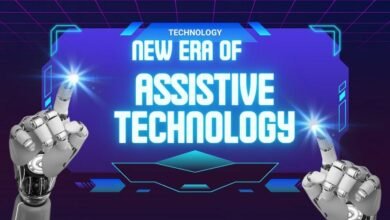
How does Continuous Integration (CI) integrate with version control systems like Git?
Continuous Integration (CI): A Comprehensive Overview
Describe continuous integration.
The software development technique known as continuous integration (CI) involves developers regularly, typically several times per day, integrating code changes into a shared repository. To find faults as quickly as possible, an automated build and testing procedure verifies each integration. By reducing the likelihood of integration issues and the amount of time required for manual testing continuous integration (CI) seeks to enhance software quality and expedite the development process.

The Fundamentals of Continuous Integration: Regular Code Integrations Code is regularly (several times per day) committed to the version control system by developers. This lessens the likelihood of disputes that result from extended periods of alone development work.
Automated Builds and Tests: An automated build and testing pipeline is started with each integration to make sure that any mistakes are detected early and that new code doesn’t interfere with the functionality of the current application.
Fast Feedback Loop: In the event that the integration fails, CI gives developers feedback right away. This input aids developers in promptly resolving problems before they become more serious.
Version Control System (VCS): Git and other version control systems are essential to continuous integration (CI) because they effectively manage code versions and track changes.
What Makes Continuous Integration Crucial?
Early Issue Detection: Developers can identify errors as soon as feasible by integrating on a frequent basis. Early detection saves time and effort by preventing issues from getting worse.
Decreased Integration Risks: Continuous code integration lessens the “integration hell” that developers frequently experience when they wait too long.
Better Collaboration: By making it simple for developers to exchange code, test it and resolve problems together in continuous integration (CI) promotes teamwork and creates a more cooperative and effective work environment.
Faster Time to Market: New features or repairs can be released more quickly because the program is automatically tested after every modification, cutting down on the amount of time between coding and deployment.
Consistent Code Quality: High code quality is maintained via automated testing, which makes sure that code complies with standards and doesn’t create errors or regressions.

Important Elements of a CI Pipeline:
Version Control System (VCS): To manage various software versions and keep track of code changes, a program like Git is utilized.
CI Server: Following each commit, the CI server is in charge of automatically constructing and testing the code.
Automated Build: To ensure that the system can be put together without human assistance, an automated build process links dependencies, compiles code, and creates executables when it has been committed to the repository.
Automated Tests: Following the build, these programmed tests (unit, integration, user interface, etc.) are executed. They guarantee that new features perform as intended and that the updated code doesn’t interfere with already-existing functionality.
Artifact Repository: For deployment or additional testing, the build and test output, including compiled code, dependencies, and containers, can be kept in artifact repositories.
Deployment Pipeline: Continuous Deployment (CD), where automated deployment pushes changes straight to production after a successful build and test cycle, is sometimes a subset of continuous integration (CI).
Top Techniques for Ongoing Integration:
Commit Frequently: To maintain the codebase current and reduce merge conflicts, developers should frequently (several times per day) commit their code to the repository.
Automated Test Writing: To confirm the code’s functionality and find flaws early, make sure it is covered by unit tests, integration tests, and other automated tests.
Maintain the CI Pipeline Quick: The feedback loop accelerates with the speed of the Continuous Integration process. Steer clear of lengthy tests or builds that could prolong the development cycle.
Continue to Use Only One Source of Truth: To guarantee that everyone uses the same codebase, use a common repository to which all team members contribute.
Address problems right away: Instead of allowing a problem to persist, address it as soon as it is identified.
Monitor the CI Process: Make sure the Continuous Integration pipeline is operating smoothly and without bottlenecks by using monitoring tools to keep tabs on the success and failure of builds.
Typical Continuous Integration Tools:
Jenkins Jenkins, one of the most well-known and established open-source continuous integration solutions, offers robust automation capabilities and is compatible with numerous plugins.
Travis CI: Well-liked for open-source projects, Travis CI automates build and test processes and connects with GitHub repositories.
CircleCI is a user-friendly cloud-based continuous integration (CI) platform that enables quick testing and integration across many settings.
GitLab CI is the integrated CI/CD solution that is closely linked with GitLab’s source control functionalities.
Azure DevOps: A Microsoft system that integrates collaboration, project management, version control, and CI/CD tools.
Bamboo is an Atlassian CI/CD tool that works well with Jira and Bitbucket, among other Atlassian products.
Differentiating between Continuous Integration, Continuous Delivery, and Continuous Deployment
Code updates are automatically tested and merged into a common repository as part of continuous integration, or CI.
By automating the deployment process, Continuous Delivery (CD) builds on Continuous Integration (CI) by guaranteeing that changes can be sent to production at any time with little manual involvement.
Every modification that passes automated testing is automatically delivered to production without human intervention in Continuous Deployment (CD), an extension of Continuous Delivery.
Difficulties with Continuous Integration Implementation:
First Configuration Complexity: Configuring build servers, automated testing, and CI pipelines can be difficult and time-consuming, especially for big or older projects.
Test Maintenance: As code changes, automated tests must be kept up to date. Tests that are outdated or poorly worded may produce false positives or negatives.

Resource management: Especially for large teams or resource-intensive applications, running regular builds and tests can demand a substantial amount of computer
Cultural Shift: Because CI is new to them or they are afraid of being watched all the time, developers may be reluctant to embrace it. It can be difficult to shift the development culture to support frequent testing and integration.
In conclusion, frequent, consistent code integration and early defect identification are two benefits of continuous integration, which is a potent technique that improves software development. Even while CI can be difficult to set up, its advantages—such as quicker development cycles, enhanced teamwork, and higher-quality software—make it a crucial component of contemporary software development methodologies. CI is a crucial enabler for Agile and DevOps approaches because it allows teams to produce high-quality software rapidly and effectively by automating testing and deployment operations.



